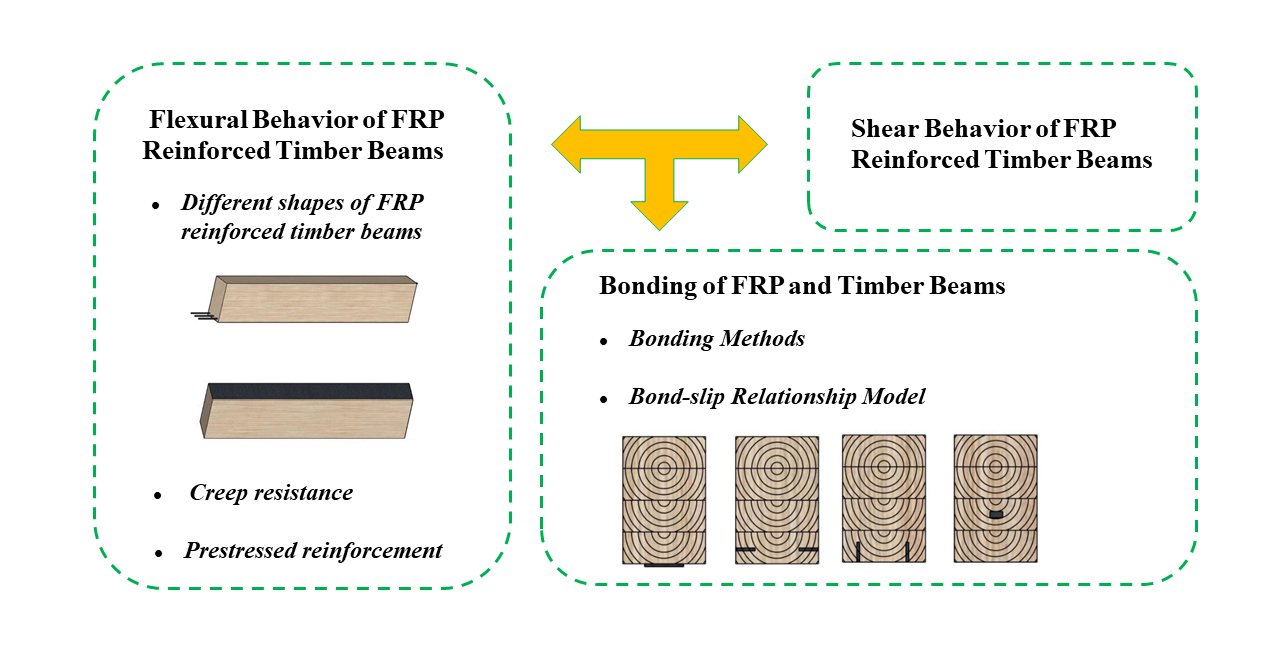 Open Access
Open Access
REVIEW
A Review on Strengthening of Timber Beams Using Fiber Reinforced Polymers
1
College of Civil Engineering, Nanjing Forestry University, Nanjing, 210037, China
2
Joint International Research Laboratory for Bio-Composite Building Materials and Structures, Nanjing Forestry University,
Nanjing, 210037, China
3
Wu Yuzhang Honors College, Sichuan University, Chengdu, 610200, China
4
Deakin University, Geelong, VIC 3216, Australia
5
University College London, London, WC1E 6BT, UK
6
University of Naples Federico II, Naples, 80133, Italy
7
Guangxi Lvjing Bamboo Industry Co., Ltd., Guilin, 541402, China
* Corresponding Author: Haitao Li. Email:
Journal of Renewable Materials 2022, 10(8), 2073-2098. https://doi.org/10.32604/jrm.2022.021983
Received 16 February 2022; Accepted 17 March 2022; Issue published 25 April 2022
Abstract
Fiber reinforced polymer (FRP) has been used in the construction industry because of its advantages such as high strength, light weight, corrosion resistance, low density and high elasticity. This paper presents a review of bonding techniques adopted to strengthen timber beams using FRP to achieve larger spans. Different methods of bonding between FRP and timber beams have been summarized with a focus on the influencing factors and their effects as well as relevant bond-slip models proposed for fundamental understanding. Experimental investigations to evaluate the flexural performance of timber beams strengthened by FRP bars, sheets and wraps have also been critically reviewed to identify key influencing parameters. Limited research available on the shear performance of FRP reinforced timber beams have been analyzed to determine the influencing factors of the shear performance in timber-FRP beams. The paper finally presents an overall summary of the current-state-of-the-art and proposes some future research directions in the field.Graphic Abstract

Keywords
Cite This Article
 Copyright © 2022 The Author(s). Published by Tech Science Press.
Copyright © 2022 The Author(s). Published by Tech Science Press.This work is licensed under a Creative Commons Attribution 4.0 International License , which permits unrestricted use, distribution, and reproduction in any medium, provided the original work is properly cited.


 Submit a Paper
Submit a Paper Propose a Special lssue
Propose a Special lssue View Full Text
View Full Text Download PDF
Download PDF Downloads
Downloads
 Citation Tools
Citation Tools